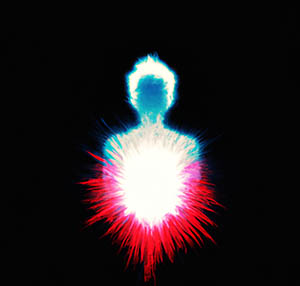Personification synesthesia
Personification synesthesia is a rare neurological condition that affects how an individual perceives inanimate objects. In this condition, the person with synesthesia may associate emotions, personalities, or even gender with objects. This unique condition affects an estimated 1% of the population, with women being more likely to have this type of synesthesia than men.

Symptoms of Personification Synesthesia
Individuals with personification synesthesia often report experiencing a strong emotional response when looking at inanimate objects, including machines, vehicles, and even everyday household items like utensils. For instance, they may experience a sense of happiness when looking at a specific object, or they may feel a sense of sadness when looking at another object. This emotional response is often accompanied by a belief that the object has its own personality or is alive.
The condition can also cause the individual to perceive inanimate objects as having gender or age. For example, they may describe a car as being male or female, or they may perceive a computer as being old or young.
Causes of Personification Synesthesia
The exact cause of personification synesthesia is not yet fully understood. However, some researchers believe that the condition may be related to the brain's cross-activation between the regions responsible for object recognition and those involved in emotional processing.
It is also worth noting that personification synesthesia is a lifelong condition and is not considered a disorder. Individuals with personification synesthesia are generally able to function normally in daily life, and many may even view their condition as a unique and interesting aspect of their personality.
Implications of Personification Synesthesia
Personification synesthesia has implications for how individuals with the condition perceive and interact with the world around them. For example, they may be more likely to anthropomorphize objects, attributing human-like qualities to non-human entities. This may affect how they interact with the world around them, as they may be more likely to feel empathy towards objects or to assign moral value to inanimate entities.
Additionally, some studies have suggested that personification synesthesia may be associated with heightened creativity and empathy. This may be related to the unique perspective that individuals with the condition have on the world, as they experience objects in a more emotionally rich and complex way than those without the condition.
The Impact of Personification Synesthesia on Artistic Expression
Personification synesthesia can have a profound impact on artistic expression, as it allows for a unique perspective on the world. For example, an artist with personification synesthesia may view objects as having a personality, and this may inform their artistic vision. They may use color, form, and other artistic elements to convey the personality or emotions of the objects they are depicting.
Artists with personification synesthesia may also have a heightened ability to create empathetic and relatable artwork. This may be due to their ability to perceive objects as having their own personalities and emotions, which allows them to create artwork that resonates with the viewer on an emotional level.
Personification synesthesia can also impact the way that an artist chooses their subject matter. For example, an artist with this type of synesthesia may choose to focus on objects that they perceive as having a strong personality or emotion. This can result in unique and thought-provoking artwork that challenges the viewer's perception of the world.